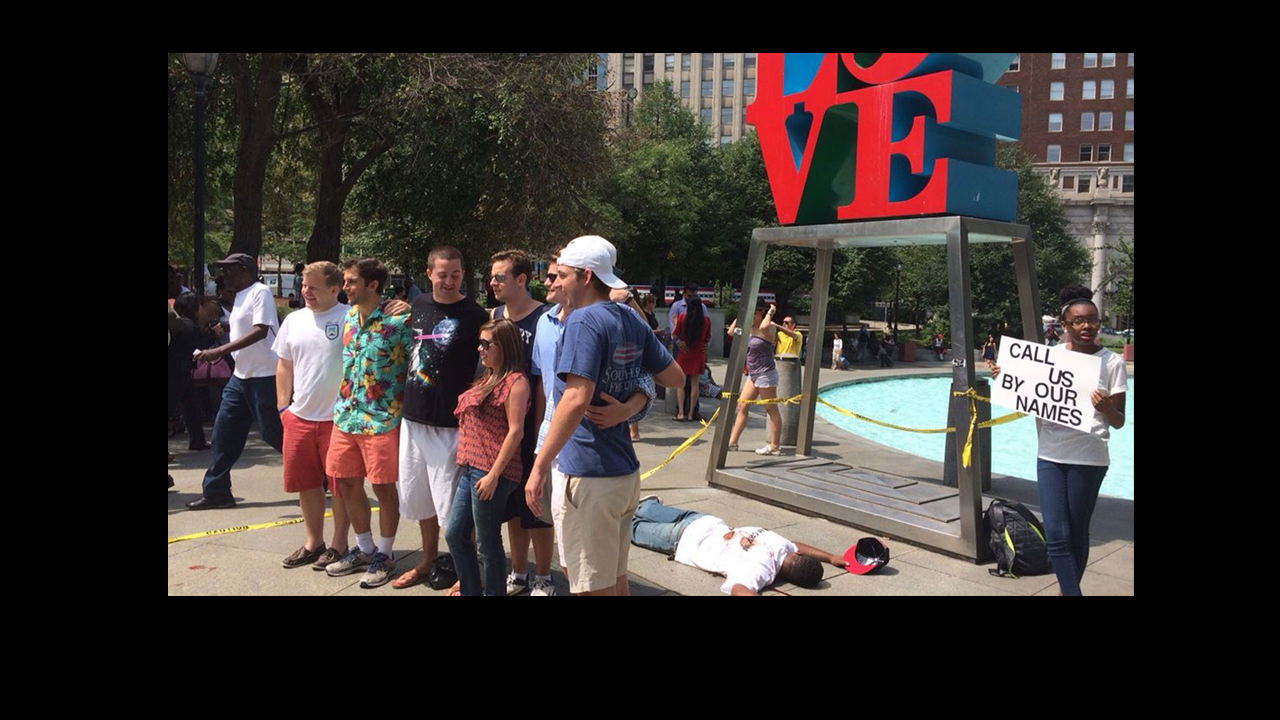A recent demonstration in Philadelphia highlighted the divided views of the current crisis in Ferguson, MO for Americans of different backgrounds. Actor Keith Wallace and friends leveraged an iconic landmark and tourist destination – Robert Indiana’s LOVE sculpture – to force a public confrontation with uncomfortable realities of racism in America. ArtNet’s Ben Davis described the scene:
For more than an hour, Keith Wallace, a young actor, lay in a shirt bloodied by fake bullet holes as if dead in front of the iconic artwork, which was also draped in a garland of police “CAUTION” tape. Two friends looked on holding a sign that read “Call Us By Our Names”—a reference, Wallace said in a statement distributed to observers, to how the media and authorities distort the reality of police violence against people of color: “Pay attention as ‘teen’ becomes ‘man,’ ‘community’ becomes ‘mob,’ and ‘murder’ becomes ‘alleged shooting.’ CALL US BY OUR NAMES!!!”
Though some seemed to appreciate and understand the performance, many tourists carried on as if it wasn’t happening, simply cropping Wallace and his friends out of their smiling photos. Wallace told Philadelphia Magazine about the discouraging responses:
One of the most hurtful things [was when] a group of friends wanted to take a picture, and one guy said, ‘I don’t want to be a part of this,’ and their friend said ‘What’s the big deal? He’s already dead.’ The people who were assisting me said one girl stepped over the body to get closer to the statue to take a picture, and the wind blew at that moment and wrapped the caution tape around her foot.
Wallace’s friends handed out a pamphlet, which can be found on Scribd, providing information about the rights citizens have in resisting police and of their intentions with the project. The pamphlet urged onlookers to humanize people of color who have died at the hands of the police.
He writes, “I am racially charged because I am not afforded the luxury to wander through life with my head in the (non-existent) “post racial America” clouds. I “SEE color” because MY COLOR IS SEEN and dismissed and devalued and implicated as a threat everywhere I go.” (Image via ArtNet)


